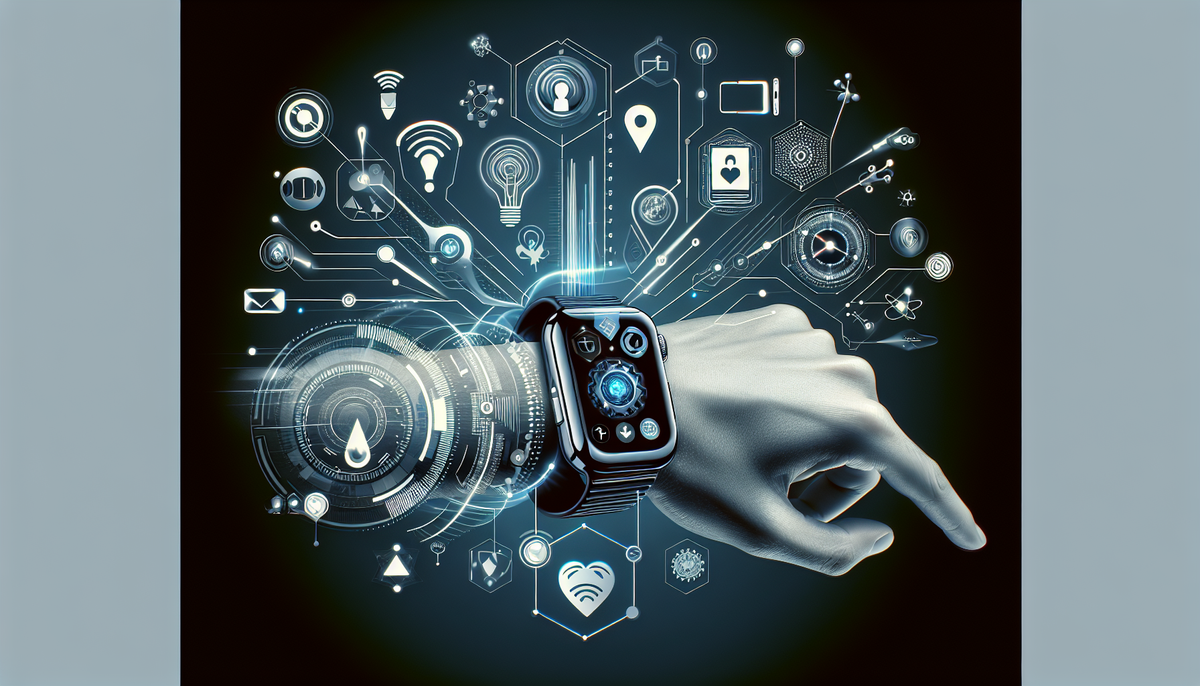Apple Watch Decline: Are Notifications Losing Appeal?

The Evolution of the Apple Watch
Over the past decade, the Apple Watch has transitioned from a novel personal device to a must-have wearable for millions. Launched as a symbol of technological innovation, the smartwatch quickly became a fusion of medical tracking, connectivity, and style. However, an emerging trend now reveals a significant downturn in its popularity. Recent market research indicates a 19% drop in global sales in 2024 alone. In this article, we delve deep into the reasons for this decline, evaluating product design, user experience, and broader market dynamics.
The Journey from Innovation to Saturation
When Apple introduced the very first version of the Apple Watch nearly ten years ago, it was heralded as a breakthrough device that promised to integrate seamlessly with users' lifestyles. By combining features such as health monitoring, notifications, and even contactless payments, the company tapped into the growing demand for technology that could improve everyday life. However, over time, the initial excitement has waned for several reasons:
- Notification Overload: Users increasingly report that constant notifications have led to a perception of the device as merely a glorified notification center.
- Feature Stagnation: Despite iterative updates like the S10 series, many improvements in functionality have been seen as minimal compared to competitors.
- Competitive Pressure: Other brands have introduced novel features and aggressive pricing strategies, capturing market segments that once gravitated toward Apple.
Understanding the Notification Dilemma
The primary complaint among disgruntled users is the barrage of notifications that the watch delivers. While integrations with an iPhone make it a perfect accessory for timely alerts, it appears that too many interruptions are now detracting from the overall experience. Social media trends and consumer feedback from platforms like Reddit and X have reinforced the sentiment that the Apple Watch is more of a digital burden than a beneficial tool.
Several users have criticized what they describe as the following issues:
- Excessive Alerts: The constant vibrations and alerts lead to distraction, particularly in professional or quiet settings.
- Limited Customization: Although users can adjust settings, the options to fine-tune notifications are often deemed insufficient.
- Data Privacy Concerns: Continuous data syncing raises questions about privacy and the collection of personal health and activity metrics.
These complaints underscore a crucial disconnect between what was initially promised as a smart, intuitive device and the lived reality experienced by wearers over time.
Market Dynamics and Consumer Expectations
Recent data from leading market research firms, like Counterpoint, highlight that while the global wearable market experienced a modest 7% downturn, Apple Watch sales uniquely plummeted by 19%. This steep decline is not solely due to notification overload but also reflects a broader trend where consumers are becoming more discerning about the practical benefits of wearable technology.
Other influential factors include:
- Lack of Major Feature Upgrades: Competing brands such as Xiaomi, Samsung, and Huawei have capitalized on more aggressive upgrade cycles, often incorporating innovative features that outweigh minor enhancements seen in recent Apple Watch Series.
- Patent and Supply Chain Challenges: Legal disputes and tighter patent regulations have intermittently disrupted supply, further contributing to the slump.
- Regional Disparities: The North American market, in particular, has seen reduced momentum, largely due to consumer hesitancy following the absence of groundbreaking new models like the Apple Watch Ultra 3.
User Experience: A Closer Look
The decline in sales is reflected not just in market statistics but also in the sentiment expressed by long-time users. Many who relied on the Apple Watch for its convenience have shifted back to more traditional devices. Common user complaints include:
- The recurrent feeling of being overwhelmed by information and alerts.
- A sense of disillusionment over the expected health and activity benefits not matching the device’s intrusiveness.
- An overall desire for simpler technology that prioritizes essential features over constant connectivity.
This feedback indicates that while wearable technology holds promise in tracking fitness and health metrics, its implementation must balance connectivity with user comfort.
The Broader Impact on Wearable Technology
The issues plaguing the Apple Watch have wider implications for the wearable tech industry. As companies vie for innovation, several key trends are emerging:
- Customization and Personalization: Future devices may focus heavily on letting users decide the level of interaction and notification frequency, reducing unwanted digital noise.
- Integration with Health Sciences: There is growing interest in using wearable technology to provide more accurate, real-time health diagnostics, which requires a delicate balance between information flow and usability.
- Battery Life and Efficiency: As devices become more advanced, issues relating to battery efficiency and energy consumption become increasingly critical.
Scientists in the field of user-interface design and wearable health technology are now exploring methodologies that reduce cognitive overload while maintaining essential functionalities. Some of these innovations include contextual notifications, machine learning algorithms to predict user behavior, and adaptive interfaces that alter the display based on situational needs.
Expert Insights and Future Directions
According to industry experts and research analysts, the Apple Watch’s decline in user engagement signals a need for a paradigm shift in wearable technology design. Anshika Jain, a Senior Research Analyst at Counterpoint, attributes the drop in sales to two main drivers: a lack of significant hardware advancements in the recent S10 series and an overly saturated market with tighter competition. Patent disputes and supply chain issues further complicated the scenario, particularly in North America.
Experts propose several pathways for the evolution of the wearable market:
- Enhanced User Control: Providing options that allow users to easily adjust and schedule their notifications could mitigate the feeling of being bombarded.
- Innovative Health Technologies: Integrating more proactive health management features such as continuous blood pressure monitoring, advanced arrhythmia detection, or even early alert systems for cardiac events.
- Modular Design Concepts: Approaches that let users upgrade specific components, rather than the entire device, may appeal to tech enthusiasts while ensuring sustainability.
Furthermore, several research initiatives and pilot programs are underway at leading universities and tech companies to explore how wearable technology can better serve its users. For instance, prototypes using augmented reality overlays to display notifications only when necessary are being tested. These systems could drastically reduce the intrusive nature of current notification models while retaining the essential functions that users depend upon.
User-Centric Design: Learning from Past Mistakes
One of the most critical aspects identified by experts is the need for a user-centric approach in future wearable tech design. The traditional top-down methodology of device functionality is now giving way to designs that place individual user preferences at the forefront. Several strategies include:
- Adaptive Notifications: Using artificial intelligence to learn when and how users prefer to receive alerts.
- Minimalist Interface Designs: Striving for cleaner interfaces that only display essential information.
- Integration with Other Devices: Allowing seamless transitions between mobile phones, wearables, and computers to create a holistic digital ecosystem that minimizes redundancy.
This direction in design not only focuses on reducing friction but also aims to redefine how technology interacts with personal space and well-being. By moving toward systems that are as discreet as they are effective, companies can recapture the innovative spark that first made wearable tech appealing.
Real-World Applications and Case Studies
Examining case studies from various global markets offers additional insight into the evolving trends. For example, in Europe and parts of Asia, brands other than Apple are rapidly gaining market share by offering advanced features at competitive prices. In these regions, consumer expectations tend to lean more towards functionality and customization rather than brand prestige alone. Some notable findings include:
- Brands like Xiaomi have seen a 135% increase in sales by focusing on affordable, feature-rich models.
- Huawei's advancements in sensor technology and battery efficiency have resulted in a 35% increase in its market position.
- Samsung’s steady 3% increase in sales is attributed to a balanced approach between innovation and user-friendliness.
These case studies highlight that while the Apple Watch struggles with its identity crisis, other companies are setting benchmarks by aligning technology with user demands more effectively. Consumers in these markets often cite improved UI/UX designs and customizable notification settings as key factors in their purchasing decisions.
Looking Ahead: The Future of Wearable Technology
Despite the current challenges, the story of the Apple Watch and the broader wearable tech market is far from over. The decline in conventional metrics such as sales does not necessarily reflect the fate of the industry, but rather signals a transitional period. The following trends are likely to shape the future:
- Deeper Health Integration: As healthcare and technology converge, future devices may play an integral role in preventive medicine and real-time health monitoring.
- Smart Notifications: Advanced algorithms may soon enable devices to recognize contexts where interruptions would be harmful, thus sparing users from unnecessary disturbances.
- Sustainable Innovation: With environmental and economic concerns coming to the forefront, modular and upgradeable designs could become the norm, extending device lifespans and reducing electronic waste.
It is also conceivable that the Apple Watch may reinvent itself in response to these challenges. Rumors about potential integration of augmented reality, deeper AI capabilities for predictive health analytics, and even tighter inter-device communication speak to the possibility of a major renaissance if Apple is willing to heed consumer feedback.
Conclusion
The 19% drop in global Apple Watch sales serves as a wake-up call not just for Apple but for the entire wearable technology industry. Users are no longer willing to tolerate a device that feels more burdensome than beneficial. As scientific research and technology continue to evolve, the focus is shifting from mere connectivity to a more holistic approach that prioritizes efficiency, personalization, and overall well-being.
While the allure of constant connectivity has its merits, the future of wearable devices will likely be determined by their ability to integrate seamlessly into our daily lives without overwhelming us. In the coming years, we can expect to see a wave of innovations aimed at striking a delicate balance between functionality and discretion. For consumers and companies alike, the message is clear: adaptability and user-centric design will be key in redefining what it means to be a truly smart wearable.
For those invested in the future of technology, this transitional period presents both challenges and opportunities. As researchers, developers, and consumers navigate these changes, the next generation of wearable tech may well be the one that finally delivers on the promise of a truly intelligent and unobtrusive device.



Comments ()